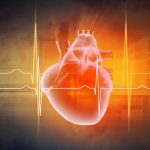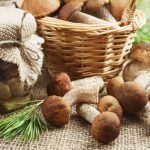Integrating East and West: Unique Agents for Respiratory Health
Carrie Decker, ND
As we transition from the dog days of summer to the dead of winter, many of us take heed of the need to support immune system function. In Traditional Chinese Medicine (TCM), autumn is the season associated with the lungs, an organ linked with sadness and grief and, when healthy, with openness to new ideas and clear thinking. With a chill in the brisk air, we all mind the importance of dressing more warmly and grabbing a scarf upon leaving the house. Those who practice TCM often take things further than this, transitioning the diet from the cooling foods of summer to the more warming and yin supportive foods of winter. Many of us do this anyway, as the seasonal availability of produce also inspires a shift to the warmer root vegetables and warming stews we find ourselves craving in the fall.
This autumn, in a year like no other, we all have a heightened awareness of the need to support lung health. As many of us anticipated already in early spring, this virus, SARS-CoV-2, is not yet behind us, and special precautious still must be taken to reduce exposure and encourage a healthy, but not too inflammatory, immune response.
In addition to addressing and eliminating the common nutritional deficiencies of vitamins A and D and the minerals selenium and zinc – which may render individuals more susceptible to infections by SARS-CoV-2 and other respiratory pathogens1–4 – we all have our eyes open and are searching for additional tools to promote a balanced and healthy immune response. We are also hyperaware of the need to further support the elderly and individuals with preexisting compromised lung function due to smoking, asthma, or chronic obstructive pulmonary disease (COPD), each of which may increase the risk and severity of infectious respiratory illness.5–9 Beyond this, we also understand that achieving immunity to infectious disease via vaccination in part depends upon the body’s ability to mount a healthy immune response to said vaccination, and we are well aware that this response is often compromised in the elderly and other populations with increased overall health risks.10–12 So, again, for each of these we look at where the data fall for natural support.
Herein, we take a look at some additional nutritional tools and the roles they play in protecting the population at large from infection. We also review the data, where it exists, that may provide further rationale for considering these agents in certain populations.
The Chinese Formula, ASHMI
A simple Chinese formula comprised of only 3 ingredients – reishi (Ganoderma lucidum), shrubby sophora (Sophora flavescens), and Chinese licorice (Glycyrrhiza uralensis) – has great potential for improving respiratory health and function, particularly in individuals with asthma. This blend, known as ASHMI (anti-asthma herbal medicine intervention), was distilled from a more complex formula known as MSSM-002.13,14 The original formula contained 14 unique ingredients and was successfully used for the treatment of asthma by Dr Xiu-Min Li, a professor of Pediatrics and Immunobiology and a researcher at the Mt Sinai School of Medicine.15 Finding that integrative practitioners and herbalists in the United States often prefer a smaller combination of herbs, Dr Li sought to bring the most effective herbs from the complex blend to this simpler formula.
The blend of these 3 ingredients, in the proportions used in the ASHMI formula, has been shown to modulate airway reactivity in the presence of stimuli by decreasing contractility and potentiating relaxation,57 reduce airway hyperreactivity by inhibiting smooth muscle contraction,58 and decrease airway inflammation and remodeling,59 thereby reducing mucous cell metaplasia and collagen synthesis.60
Positive outcomes have been shown clinically with the use of the ASHMI blend for the treatment of asthma in both children16 and adults.17 Among children ranging from 5 to 14 years of age, when compared to an inhaled corticosteroid with placebo, the combination of the ASHMI blend with the inhaled corticosteroid led to significantly lower symptom scores as well as lower IgE and eosinophilic cationic protein levels.16 In addition, the children receiving ASHMI had significantly higher cortisol and interferon (IFN)-γ levels, suggesting the botanical blend may lessen the adverse immune- and adrenal-suppressive effects of corticosteroid use.
Similar effects were seen in the adults, although in this study the performance of the ASHMI blend was evaluated against corticosteroids rather than as an adjunctive therapy.17 In this 4-week randomized, double-blind, placebo-controlled trial (RDBPCT), adults with moderate-to-severe asthma were given 20 mg of prednisone orally each day or 1.2 g thrice daily of the ASHMI blend. Participants were allowed to continue to use β2-agonist inhalers as needed, but if they needed additional interventions, they were to be withdrawn from the study.
At completion of the study, clinical symptoms and post-treatment lung function, as assessed by the forced expiratory volume in 1 second (FEV1) and peak expiratory flow, were significantly improved in both groups.17 Moreover, use of β2-agonists, serum IgE levels, and Th2 cytokine levels were significantly reduced in both groups. Post-treatment lung function and Th2 cytokine levels were slightly but significantly better in the prednisone group. Similar to the pediatric study, in the adult group receiving the ASHMI blend, serum cortisol and IFN-γ levels were significantly increased while the same parameters were significantly decreased in the prednisone group. Additionally, over the 4-week period, those receiving prednisone had significantly greater weight gain, and more participants reported gastric discomfort.17
Licorice
Although not assessed in these studies, the same botanical blend has great potential to reduce risk of infection and further impact the inflammatory response. Licorice, a mainstay of Chinese botanical formulas, is well established as an antiviral and immunoregulatory botanical.18,19 It stimulates immune function by increasing proliferation of lymphocytes, while simultaneously keeping inflammation in check.20,21 Antiviral activity has been demonstrated against herpes simplex virus, influenza, rotavirus, respiratory syncytial virus, varicella zoster virus, coxsackie virus, and other common viral infections.20
Licorice, more specifically its biologically active constituent, glycyrrhizin, truncates inflammation in part by inhibiting the cytokine activities of HMGB1 (high mobility group box 1)22–24; this protein – also known as an alarmin – is involved in the inflammatory response in both infectious and non-infectious conditions.25 HMGB1 interacts with nuclear material as well as cellular membrane receptors to trigger the release of cytokines, although it also plays a role in tissue repair and regeneration.26,27 HMGB1 levels have been shown to be 5 times higher in the lungs of patients with asthma than in healthy subjects, and to correlate with asthma severity.28–30 HMGB1 has also been implicated in the flood of cytokines that is associated with severe viral infections, including the more severe cases of COVID-19.31–33
Reishi
Reishi, which dominates the ASHMI formula in terms of proportions, is also well known for its anti-inflammatory and antioxidant activity.34,35 Much like other medicinal mushrooms, reishi contains high levels of polysaccharides that contribute to its activity as an immunomodulatory and anti-inflammatory agent.34,36 The polysaccharide fraction of reishi has been shown to impact immune function at the level of the gut; as a prebiotic, it promotes a healthy microbiota balance and intestinal barrier function.37-39 A healthy gut microbiome helps protect the body from all types of pathogens, including viral invaders,40,41 while the integrity of the gut barrier and function of the gut lymphoid tissue play important roles in regulating inflammation and the immune response.
Reishi also contains terpenoids with anti-inflammatory activity.42 One such terpenoid is ganoderic acid, which has been shown to be the main compound in the ASHMI formula that suppresses production of TNF-α.43 The terpenoids found in reishi have antiviral activity, including blocking cellular uptake of viral particles, reducing viral replication, and preventing viral budding from the host cell by inhibiting the neuraminidase enzyme.44-46
Shrubby Sophora
Of the 3 components of the ASHMI blend, shrubby sophora is likely the one that herbalists outside of Asia are least familiar with. Several species from the Sophora family are used in Chinese medicine.47 The root of shrubby sophora has antioxidant and anti-inflammatory properties and is used in TCM for the treatment of allergies and infectious conditions. The root contains numerous alkaloids and flavonoids that mediate its medicinal activities.48,49 Matrine, one of the main bioactive compounds in shrubby sophora and other Sophora spp, has been shown to reduce levels of inflammatory mediators in response to lipopolysaccharide while also protecting against acute lung injury, histologic changes, and edema.50
Matrine also has antiviral, antifibrotic, and analgesic activity.51 Studies have shown the various compounds in shrubby sophora to have antiviral activity against common pathogens, including herpes simplex virus,52 respiratory syncytial virus,53 enterovirus 71,54 and hepatitis B.55,56
Vitamin E as Alpha-Tocopherol
We all are familiar with the antioxidant members of the vitamin E family, and their importance as an essential nutrient for protection of cellular membranes and prevention of lipoprotein oxidation.61,62 However, many are less aware of their importance for healthy immune system function, particular with age. Although severe vitamin E deficiency is uncommon and generally only occurs with severe malnutrition or fat malabsorption,63-65 it has been estimated that 90% of US adults and more than 80% of US children do not consume sufficient amounts of vitamin E.66,67 Studies suggest that vitamin E deficiency is one of the factors contributing to the age-related decline in T cell function.68,69 The declining function of T cells with age is a factor that not only puts the elderly at increased risk of infectious disease; it also impairs the effectiveness of vaccinations.70
The protective effect of vitamin E on cellular membranes is also important for normal, healthy function and signal transduction in cells of the immune system.71,72 An innate aspect of immune cells, inherent to their response to pathogens, is their ability to combat oxidative stress.73 Dietary supplementation of vitamin E in animals has been shown to increase levels of interleukin (IL)-2 (which promotes T-cell growth and differentiation74), IFN-γ (which decreases with age75),76 lymphocyte proliferation, and the responsiveness of lymphocytes and natural killer cells to stimuli.77-79
In older adults and smokers, multiple studies suggest that supplementation of α-tocopherol may improve various aspects of immune function and help protect against infection.80-82 In a RDBPCT of elderly nursing home residents, 1 year of α-tocopherol supplementation at a dose of 200 IU/day significantly reduced the number of residents having respiratory infections (all types, but especially upper respiratory) and incidence of the common cold.83 In smokers over 65 years of age, supplementation of 50 mg/day of α-tocopherol reduced the incidence of colds over a 4-year period, with the greatest reductions seen in older city-dwellers who smoked fewer than 15 cigarettes per day.84 In a large population of male smokers aged 50 to 69 years, it was also shown that supplementation of 50 mg of α-tocopherol daily reduced the incidence of pneumonia by 69% in otherwise healthy (exercising) smokers who smoked 5-19 cigarettes per day.85
Tocotrienols
The tocotrienol members of the vitamin E family often receive less attention, yet may be of even greater importance in balancing the immune and inflammatory response. Studies have shown that supplementation with a palm-sourced tocotrienol and tocopherol blend significantly increases lymphocyte proliferation in older mice, compared to those receiving α-tocopherol only.86 A 4-arm study compared the effects of a tocotrienol-rich blend (TRB) of α-, γ-, and δ-tocotrienols; α-tocopherol; δ-tocotrienols; and placebo.87 Only the groups receiving the TRB or δ-tocotrienols showed a significant increase in antibodies to tetanoid toxin (TT) after vaccination. And in young, healthy humans, daily supplementation with 400 mg of a TRB for 1 month prior to and after vaccination with TT also significantly enhanced anti-TT IgG production as well as TT-stimulated leukocyte IFN-γ production 1 month after vaccination, as compared to the placebo group.88
One unique aspect of protection that tocotrienols have demonstrated, but α-tocopherol has not, is reduction of NLRP3 inflammasome activation. The NLRP3 inflammasome plays a role in numerous conditions, including many facets of metabolic syndrome, neurodegenerative disease, respiratory disease, stroke and cardiovascular disease, and certain infectious diseases.89-91 Air pollution and allergies are both factors that can push the NLRP3 inflammasomes of the airway epithelium to a “tipping point” upon which subsequent insults, such as an infection, can produce a cascade effect of excessive cytokine production.92-95 In animals, systemic inflammatory response syndrome has been shown in multiple conditions to be related to activation of the NLRP3 inflammasome.96,97
Several studies have shown that γ- and δ-tocotrienols, or a γ-/δ-tocotrienol blend, significantly suppress NLRP3 inflammasome activation and protects against NLRP3 inflammasome-related inflammation and development of disease.98,99 In critically ill patients, thrice daily administration of a combination of 400 IU of a tocotrienol blend with 500 mg of vitamin C (via nasogastric or oral administration) was shown to improve numerous clinical parameters associated with systemic inflammatory response syndrome, with better outcomes compared to a group receiving 400 IU of α-tocopherol with vitamin C.100
Animal studies have also shown tocotrienols to help prevent the respiratory histological changes that occur with inflammation and damaging insults. In mice exposed to cigarette smoke for 2 months, supplementation of γ-tocotrienols in the final 3 weeks dramatically attenuated changes in the bronchial epithelium thickness and alveolar diameter.101 All aspects of lung function were significantly improved with the highest dose of tocotrienols, and with many of the mice recovering to a greater extent than those receiving prednisone. Researchers are currently investigating whether tocotrienols can ameliorate lung fibrosis of an inflammatory etiology, as several pathways implicated in these tissue changes are similar to those in hepatic fibrosis102 – a condition that tocotrienols have been shown in multiple studies to improve.103,104
Dead Probiotics
A close sibling of probiotics, that many clinicians are unfamiliar with, is their heat-killed counterparts; these are often termed “immunobiotics” due to their immune-enhancing potential.105 The family of immunobiotics also includes living bacteria,106 but, interestingly, the immune-modulating effects of heat-killed bacteria are often comparatively very similar, or even stronger.107-109 Because they are no longer viable organisms, they also have a greater safety profile than living organisms, particularly in the seriously ill or immunocompromised.109,110 The cell-wall fragments from lactic acid bacteria have generally been shown to enhance the Th1 immune response while simultaneously reducing the Th2 response, which of course explains their positive impact on allergies as well.111-113
Numerous animal and human studies have shown that heat-killed Lactobacillus plantarum L-137 (HK L-137) promotes a balanced and healthy immune response against viral invaders. In mice, oral administration of HK L-137 for 2 weeks, beginning 1 week prior to infection with a typically fatal murine version of H1N1, significantly prolonged survival time and reduced viral titers in the lungs.114 In a RDBPCT of healthy adults, HK L-137 at a dose of 10 mg daily significantly improved quality-of-life scores at 8 weeks and significantly increased the Th1:Th2 ratio compared to controls115; it also increased lymphocyte percentage (within normal ranges) and natural killer activity (in a subset of the population). In a recent RDBPCT, HK L-137 was shown to reduce the incidence of upper respiratory tract infection (URTI) in subjects with high levels of stress.116 Additionally, URTI duration and severity and amount of medication use were significantly negatively correlated with duration of HK L-137 use.
In addition to HK L-137, certain heat-killed strains of L rhamnosus and the products of probiotic lysis have also been shown to have considerable immune-modulating activity,117,118 not only in protecting against infection, but also in downregulating inflammation and a pro-coagulatory state.119,120
Conclusion
Clearly, studies suggest that many natural therapies can help protect against infection and encourage a balanced immune response. Reishi, shrubby sophora, Chinese licorice, members of the vitamin E family (especially tocotrienols), and heat-killed probiotics are but a few examples of efficacious agents that can be used to round out the toolbox of integrative practitioners seeking to support individuals of all ages in staying healthy and well.
References:
- Jayawardena R, Sooriyaarachchi P, Chourdakis M, et al. Enhancing immunity in viral infections, with special emphasis on COVID-19: A review. Diabetes Metab Syndr. 2020;14(4):367-382.
- Zhang J, Taylor EW, Bennett K, et al. Association between regional selenium status and reported outcome of COVID-19 cases in China. Am J Clin Nutr. 2020;111(6):1297-1299.
- Ilie PC, Stefanescu S, Smith L. The role of vitamin D in the prevention of coronavirus disease 2019 infection and mortality. Aging Clin Exp Res. 2020;32(7):1195-1198.
- Skalny AV, Rink L, Ajsuvakova OP, et al. Zinc and respiratory tract infections: Perspectives for COVID‑19 (Review). Int J Mol Med. 2020;46(1):17-26.
- Zhao Q, Meng M, Kumar R, et al. The impact of COPD and smoking history on the severity of COVID-19: A systemic review and meta-analysis [published online ahead of print, 2020 Apr 15]. J Med Virol. 2020;10.1002/jmv.25889.
- de Oliveira TB, Klering EA, da Veiga ABG. Is recurrent respiratory infection associated with allergic respiratory disease? J Asthma. 2019;56(2):160‐166.
- Garg S, Kim L, Whitaker M, et al. Hospitalization Rates and Characteristics of Patients Hospitalized with Laboratory-Confirmed Coronavirus Disease 2019—COVID-NET, 14 States, March 1–30, 2020. MMWR Morb Mortal Wkly Rep. 2020;69(15):458-464.
- Liu K, Chen Y, Lin R, Han K. Clinical features of COVID-19 in elderly patients: A comparison with young and middle-aged patients. J Infect. 2020;80(6):e14-e18.
- Ticinesi A, Nouvenne A, Folesani G, et al. An investigation of multimorbidity measures as risk factors for pneumonia in elderly frail patients admitted to hospital. Eur J Intern Med. 2016;28:102-106.
- Kumar R, Burns EA. Age-related decline in immunity: implications for vaccine responsiveness. Expert Rev Vaccines. 2008;7(4):467-479.
- Young KM, Gray CM, Bekker LG. Is obesity a risk factor for vaccine non-responsiveness? PLoS One. 2013;8(12):e82779.
- van den Berg R, van Hoogstraten I, van Agtmael M. Non-responsiveness to hepatitis B vaccination in HIV seropositive patients; possible causes and solutions. AIDS Rev. 2009;11(3):157-164.
- Li XM, Zhang TF, Sampson H, et al. The potential use of Chinese herbal medicines in treating allergic asthma. Ann Allergy Asthma Immunol. 2004;93(2 Suppl 1):S35-S44.
- Li XM, Huang CK, Zhang TF, et al. The Chinese herbal medicine formula MSSM-002 suppresses allergic airway hyperreactivity and modulates TH1/TH2 responses in a murine model of allergic asthma. J Allergy Clin Immunol. 2000;106(4):660-668.
- Ichan School of Medicine at Mount Sinai. Xiu Min Li Laboratory: Team Members. 2020. Available at: https://labs.icahn.mssm.edu/xiu-min-li-lab/about-us/224-2/. Accessed May 19, 2020.
- Busse P, Wen M, Srivastava KD, Wei CH. Safety, tolerability and beneficial immunological responses of complementary ASHMI therapy to inhaled corticosteroids therapy in children with persistent allergic asthma with or without allergic rhinitis. J Allergy Clin Immunol. 2010;125(2).
- Wen MC, Wei CH, Hu ZQ, et al. Efficacy and tolerability of antiasthma herbal medicine intervention in adult patients with moderate-severe allergic asthma. J Allergy Clin Immunol. 2005;116(3):517-524.
- Wang L, Yang R, Yuan B, et al. The antiviral and antimicrobial activities of licorice, a widely-used Chinese herb. Acta Pharm Sin B. 2015;5(4):310-315.
- Asl MN, Hosseinzadeh H. Review of pharmacological effects of Glycyrrhiza sp. and its bioactive compounds. Phytother Res. 2008;22(6):709-724.
- Yang R, Wang LQ, Yuan BC, Liu Y. The Pharmacological Activities of Licorice. Planta Med. 2015;81(18):1654-1669.
- Michaelis M, Geiler J, Naczk P, et al. Glycyrrhizin inhibits highly pathogenic H5N1 influenza A virus-induced pro-inflammatory cytokine and chemokine expression in human macrophages. Med Microbiol Immunol. 2010;199(4):291-297.
- Mollica L, De Marchis F, Spitaleri A, et al. Glycyrrhizin binds to high-mobility group box 1 protein and inhibits its cytokine activities. Chem Biol. 2007;14(4):431-441.
- Zhao F, Fang Y, Deng S, et al. Glycyrrhizin Protects Rats from Sepsis by Blocking HMGB1 Signaling. Biomed Res Int. 2017;2017:9719647.
- Gong G, Yuan LB, Hu L, et al. Glycyrrhizin attenuates rat ischemic spinal cord injury by suppressing inflammatory cytokines and HMGB1. Acta Pharmacol Sin. 2012;33(1):11-18.
- Ulloa L, Messmer D. High-mobility group box 1 (HMGB1) protein: friend and foe. Cytokine Growth Factor Rev. 2006;17(3):189-201.
- Andersson U, Ottestad W, Tracey KJ. Extracellular HMGB1: a therapeutic target in severe pulmonary inflammation including COVID-19? Mol Med. 2020;26(1):42.
- Klune JR, Dhupar R, Cardinal J, et al. HMGB1: endogenous danger signaling. Mol Med. 2008;14(7-8):476-484.
- Hou C, Zhao H, Liu L, et al. High mobility group protein B1 (HMGB1) in asthma: comparison of patients with chronic obstructive pulmonary disease and healthy controls. Mol Med. 2011;17(7-8):807-815.
- Watanabe T, Asai K, Fujimoto H, et al. Increased levels of HMGB-1 and endogenous secretory RAGE in induced sputum from asthmatic patients. Respir Med. 2011;105(4):519-525.
- Di Candia L, Gomez E, Venereau E, et al. HMGB1 is upregulated in the airways in asthma and potentiates airway smooth muscle contraction via TLR4. J Allergy Clin Immunol. 2017;140(2):584-587.
- Patel MC, Shirey KA, Boukhvalova MS, et al. Serum high-mobility-group box 1 as a biomarker and a therapeutic target during respiratory virus infections. mBio. 2018;9(2):e00246-18.
- Wang H, Ward MF, Fan XG, et al. Potential role of high mobility group box 1 in viral infectious diseases. Viral Immunol. 2006;19(1):3-9.
- Ives J, ed. HMGB1 protein may play a key role in pulmonary inflammation, tissue damage in severe COVID-19 cases. May 8, 2020. News-Medical Life Sciences. Available at: https://www.news-medical.net/news/20200508/HMGB1-protein-may-play-a-key-role-in-pulmonary-inflammation-tissue-damage-in-severe-COVID-19-cases.aspx. Accessed May 9, 2020.
- Joseph S, Sabulal B, George V, et al. Antitumor and anti-inflammatory activities of polysaccharides isolated from Ganoderma lucidum. Acta Pharm. 2011;61(3):335-342.
- Zhu M, Chang Q, Wong LK, et al. Triterpene antioxidants from ganoderma lucidum. Phytother Res. 1999;13(6):529-531.
- Lai CY, Hung JT, Lin HH, et al. Immunomodulatory and adjuvant activities of a polysaccharide extract of Ganoderma lucidum in vivo and in vitro. Vaccine. 2010;28(31):4945-4954.
- Wei B, Zhang R, Zhai J, et al. Suppression of Th17 Cell Response in the Alleviation of Dextran Sulfate Sodium-Induced Colitis by Ganoderma lucidum Polysaccharides. J Immunol Res. 2018;2018:2906494.
- Jin M, Zhu Y, Shao D, et al. Effects of polysaccharide from mycelia of Ganoderma lucidum on intestinal barrier functions of rats. Int J Biol Macromol. 2017;94(Pt A):1-9.
- Chang CJ, Lin CS, Lu CC, et al. Ganoderma lucidum reduces obesity in mice by modulating the composition of the gut microbiota. Version 2. Nat Commun. 2015;6:7489.
- Li N, Ma WT, Pang M, et al. The commensal microbiota and viral infection: a comprehensive review. Front Immunol. 2019;10:1551.
- Kamada N, Seo SU, Chen GY, Núñez G. Role of the gut microbiota in immunity and inflammatory disease. Nat Rev Immunol. 2013;13(5):321-335.
- Akihisa T, Nakamura Y, Tagata M, et al. Anti-inflammatory and anti-tumor-promoting effects of triterpene acids and sterols from the fungus Ganoderma lucidum. Chem Biodivers. 2007;4(2):224-231.
- Liu C, Yang N, Song Y, et al. Ganoderic acid C1 isolated from the anti-asthma formula, ASHMI™ suppresses TNF-α production by mouse macrophages and peripheral blood mononuclear cells from asthma patients. Int Immunopharmacol. 2015;27(2):224-231.
- Zhang W, Tao J, Yang X, et al. Antiviral effects of two Ganoderma lucidum triterpenoids against enterovirus 71 infection. Biochem Biophys Res Commun. 2014;449(3):307-312.
- Li YQ, Wang SF. Anti-hepatitis B activities of ganoderic acid from Ganoderma lucidum. Biotechnol Lett. 2006;28(11):837-841.
- Zhu Q, Bang TH, Ohnuki K, et al. Inhibition of neuraminidase by Ganoderma triterpenoids and implications for neuraminidase inhibitor design. Sci Rep. 2015;5:13194.
- Krishna PM, KNV R, Banji D. A review on phytochemical, ethnomedical and pharmacological studies on genus Sophora, Fabaceae. Rev Bras Farmacogn. 2012;22(5):1145-1154. Available at: https://www.scielo.br/scielo.php?script=sci_arttext&pid=S0102-695X2012000500029. Accessed May 9, 2020.
- Miao K, Zhang J, Dong Y, Xi Y. Research progress on the chemical compounds and pharmacology of Sophora flavescens. Nat Prod Res Dev. 2001;13(2):69-73.
- Zhao HJ, Sun WJ. Research progress on the flavonoids in Sophora flavescens Ait. and their pharmacology. J Chin Med Mat. 2005;28:247-251.
- Zhang B, Liu ZY, Li YY, et al. Antiinflammatory effects of matrine in LPS-induced acute lung injury in mice. Eur J Pharm Sci. 2011;44(5):573-579.
- Huang J, Xu H. Matrine: Bioactivities and Structural Modifications. Curr Top Med Chem. 2016;16(28):3365-3378.
- Woo ER, Kwak JH, Kim HJ, Park H. A New Prenylated Flavonol from the Roots of Sophora flavescens. J Nat Prod. 1998;61(12):1552-1554.
- Ma SC, Du J, But PP, et al. Antiviral Chinese medicinal herbs against respiratory syncytial virus. J Ethnopharmacol. 2002;79(2):205-211.
- Ren G, Ding G, Zhang H, et al. Antiviral activity of sophoridine against enterovirus 71 in vitro. J Ethnopharmacol. 2019;236:124-128.
- Zhang YB, Luo D, Yang L, et al. Matrine-Type Alkaloids from the Roots of Sophora flavescens and Their Antiviral Activities against the Hepatitis B Virus. J Nat Prod. 2018;81(10):2259-2265.
- Zhang YB, Luo D, Yang L, et al. Dimeric Matrine-Type Alkaloids from the Roots of Sophora flavescens and Their Anti-Hepatitis B Virus Activities. J Org Chem. 2016;81(15):6273-6280.
- Srivastava KD, Zou ZM, Sampson HA, et al. Direct modulation of airway reactivity by the Chinese anti-asthma herbal formula ASHMI. J Allergy Clinical Immunol. 2005;115(2):S7.
- Srivastava KD, Zou ZM, Sampson HA, et al. The anti-asthma herbal medicine ASHMI acutely inhibits airway smooth muscle contraction via prostaglandin E2 activation of EP2/EP4 receptors. Am J Physiol Lung Cell Mol Physiol. 2013;305(12):L1002‐L1010.
- Zhang T, Srivastava K, Wen MC, et al. Pharmacology and immunological actions of a herbal medicine ASHMI on allergic asthma. Phytother Res. 2010;24(7):1047-1055.
- Busse PJ, Schofield B, Birmingham N, et al. The traditional Chinese herbal formula ASHMI inhibits allergic lung inflammation in antigen-sensitized and antigen-challenged aged mice. Ann Allergy Asthma Immunol. 2010;104(3):236-246.
- Atkinson J, Epand RF, Epand RM. Tocopherols and tocotrienols in membranes: a critical review. Free Radic Biol Med. 2008;44(5):739-764.
- Valenzuela A, Sanhueza J, Nieto S. Cholesterol oxidation: health hazard and the role of antioxidants in prevention. Biol Res. 2003;36(3-4):291-302.
- Sokol RJ, Heubi JE, Iannaccone S, et al. Mechanism causing vitamin E deficiency during chronic childhood cholestasis. Gastroenterology. 1983;85(5):1172-1182.
- Farrell PM, Bieri JG, Fratantoni JF, et al. The occurrence and effects of human vitamin E deficiency. A study in patients with cystic fibrosis. J Clin Invest. 1977;60(1):233-241.
- Kalra V, Grover J, Ahuja GK, et al. Vitamin E deficiency and associated neurological deficits in children with protein-energy malnutrition. J Trop Pediatr. 1998;44:291-295.
- Traber MG. Vitamin E inadequacy in humans: causes and consequences. Adv Nutr. 2014;5(5):503-514.
- Bailey RL, Fulgoni III VL, Keast DR, et al. Do dietary supplements improve micronutrient sufficiency in children and adolescents? J Pediatr. 2012;161(5):837-842.
- Wu D, Meydani SN. Age-associated changes in immune and inflammatory responses: impact of vitamin E intervention. J Leukoc Biol. 2008;84(4):900-914.
- Beharka AA, Wu D, Han SN, Meydani SN. Macrophage prostaglandin production contributes to the age-associated decrease in T cell function which is reversed by the dietary antioxidant vitamin E. Mech Ageing Dev. 1997;93(1-3):59-77.
- Haynes L, Maue AC. Effects of aging on T cell function. Curr Opin Immunol. 2009;21(4):414-417.
- Coquette A, Vray B, Vanderpas J. Role of vitamin E in the protection of the resident macrophage membrane against oxidative damage. Arch Int Physiol Biochim. 1986;94(5):S29-S34.
- Sharmanov AT, Aidarkhanov BB, Kurmangalinov SM. Effect of vitamin E deficiency on oxidative metabolism and antioxidant enzyme activity of macrophages. Ann Nutr Metab. 1990;34(3):143-146.
- Victor VM, De la Fuente M. Immune cells redox state from mice with endotoxin-induced oxidative stress. Involvement of NF-kappaB. Free Radic Res. 2003;37(1):19-27.
- Liao W, Lin JX, Leonard WJ. IL-2 family cytokines: new insights into the complex roles of IL-2 as a broad regulator of T helper cell differentiation. Curr Opin Immunol. 2011;23(5):598-604.
- Bryan N, Sarwari AR. Chapter 10: Immune Response and Infections in the Elderly. In: Akhtar S, Rosenbaum S, eds. Principles of Geriatric Critical Care. Cambridge, England: Cambridge University Press; 2018:138-146.
- Han SN, Wu D, Ha WK, et al. Vitamin E supplementation increases T helper 1 cytokine production in old mice infected with influenza virus. Immunology. 2000;100(4):487-493.
- Meydani SN, Meydani M, Verdon CP, et al. Vitamin E supplementation suppresses prostaglandin E1(2) synthesis and enhances the immune response of aged mice. Mech Ageing Dev. 1986;34(2):191-201.
- Sakai S, Moriguchi S. Long-term feeding of high vitamin E diet improves the decreased mitogen response of rat splenic lymphocytes with aging. J Nutr Sci Vitaminol (Tokyo). 1997;43(1):113-122.
- Moriguchi S, Kobayashi N, Kishino Y. High dietary intakes of vitamin E and cellular immune functions in rats. J Nutr. 1990;120(9):1096-1102.
- Meydani SN, Meydani M, Blumberg JB, et al. Vitamin E supplementation and in vivo immune response in healthy elderly subjects. A randomized controlled trial. JAMA. 1997;277(17):1380-1386.
- De la Fuente M, Hernanz A, Guayerbas N, et al. Vitamin E ingestion improves several immune functions in elderly men and women. Free Radic Res. 2008;42(3):272-280.
- Hemilä H, Virtamo J, Albanes D, Kaprio J. Vitamin E and beta-carotene supplementation and hospital-treated pneumonia incidence in male smokers. Chest. 2004;125(2):557-565.
- Meydani SN, Leka LS, Fine BC, et al. Vitamin E and respiratory tract infections in elderly nursing home residents: a randomized controlled trial. JAMA. 2004;292(7):828-836.
- Hemilä H, Kaprio J, Albanes D, et al. Vitamin C, vitamin E, and beta-carotene in relation to common cold incidence in male smokers. Epidemiology. 2002;13(1):32-37.
- Hemilä H. Vitamin E administration may decrease the incidence of pneumonia in elderly males. Clin Interv Aging. 2016;11:1379-1385.
- Ren Z, Pae M, Dao MC, et al. Dietary supplementation with tocotrienols enhances immune function in C57BL/6 mice. J Nutr. 2010;140(7):1335-1341.
- Radhakrishnan AK, Mahalingam D, Selvaduray KR, Nesaretnam K. Supplementation with natural forms of vitamin E augments antigen-specific TH1-type immune response to tetanus toxoid. Biomed Res Int. 2013;2013:782067.
- Mahalingam D, Radhakrishnan AK, Amom Z, et al. Effects of supplementation with tocotrienol-rich fraction on immune response to tetanus toxoid immunization in normal healthy volunteers. Eur J Clin Nutr. 2011;65(1):63-69.
- Brusselle GG, Provoost S, Bracke KR, et al. Inflammasomes in respiratory disease: from bench to bedside. Chest. 2014;145(5):1121-1133.
- Yang Y, Wang H, Kouadir M, et al. Recent advances in the mechanisms of NLRP3 inflammasome activation and its inhibitors. Cell Death Dis. 2019;10(2):128.
- Liu D, Zeng X, Li X, et al. Role of NLRP3 inflammasome in the pathogenesis of cardiovascular diseases. Basic Res Cardiol. 2017;113(1):5.
- Im H, Ammit AJ. The NLRP3 inflammasome: role in airway inflammation. Clin Exp Allergy. 2014;44(2):160-172.
- Hirota JA, Marchant DJ, Singhera GK, et al. Urban particulate matter increases human airway epithelial cell IL-1β secretion following scratch wounding and H1N1 influenza A exposure in vitro. Exp Lung Res. 2015;41(6):353-362.
- Sayan M, Mossman BT. The NLRP3 inflammasome in pathogenic particle and fibre-associated lung inflammation and diseases. Part Fibre Toxicol. 2016;13(1):51.
- Varga A, Budai MM, Milesz S, et al. Ragweed pollen extract intensifies lipopolysaccharide-induced priming of NLRP3 inflammasome in human macrophages. Immunology. 2013;138(4):392-401.
- Sendler M, van den Brandt C, Glaubitz J, et al. NLRP3 Inflammasome Regulates Development of Systemic Inflammatory Response and Compensatory Anti-Inflammatory Response Syndromes in Mice with Acute Pancreatitis. Gastroenterology. 2020;158(1):253-269.
- Xiang M, Shi X, Li Y, et al. Hemorrhagic shock activation of NLRP3 inflammasome in lung endothelial cells. J Immunol. 2011;187(9):4809-4817.
- Kim Y, Gromovsky AD, Brown JM, Chung S. Gamma-tocotrienol attenuates the aberrant lipid mediator production in NLRP3 inflammasome-stimulated macrophages. J Nutr Biochem. 2018;58:169-177.
- Buckner T, Fan R, Kim Y, et al. Annatto Tocotrienol Attenuates NLRP3 Inflammasome Activation in Macrophages. Curr Dev Nutr. 2017;1(6):e000760.
- Husam YE, Raha AR, Jaafar MZ, Mohd Heikal MY. The Effectiveness of Tocotrienol Rich Fraction and Αlpha Tocoferol with Combination of Vitamin C in the Management of Systemic Inflammatory Response Syndrome (SIRS). J Surgical Academia. 2017;7(2):4-12.
- Peh HY, Tan WD, Chan TK, et al. Vitamin E isoform γ-tocotrienol protects against emphysema in cigarette smoke-induced COPD. Free Radic Biol Med. 2017;110:332-344.
- Makarev E, Izumchenko E, Aihara F, et al. Common pathway signature in lung and liver fibrosis. Cell Cycle. 2016;15(13):1667-1673.
- Kim Y, Natarajan SK, Chung S. Gamma-Tocotrienol Attenuates the Hepatic Inflammation and Fibrosis by Suppressing Endoplasmic Reticulum Stress in Mice. Mol Nutr Food Res. 2018;62(21):e1800519.
- Yachi R, Muto C, Ohtaka N, et al. Effects of tocotrienol on tumor necrosis factor-α/d-galactosamine-induced steatohepatitis in rats. J Clin Biochem Nutr. 2013;52(2):146-153.
- Adams CA. The probiotic paradox: live and dead cells are biological response modifiers. Nutr Res Rev. 2010;23(1):37-46.
- Villena J, Salva S, Barbieri N, Alvarez S. Immunobiotics for the Prevention of Bacterial and Viral Respiratory Infections. In: Kitazawa H, Villena J, Alvarez S, eds. Probiotics: Immunobiotics and Immunogenics. Boca Raton, FL: CRC Press; 2013: 128-168.
- Villena J, Barbieri N, Salva S, et al. Enhanced immune response to pneumococcal infection in malnourished mice nasally treated with heat-killed Lactobacillus casei. Microbiol Immunol. 2009;53(11):636-646.
- Li N, Russell WM, Douglas-Escobar M, et al. Live and heat-killed Lactobacillus rhamnosus GG: effects on proinflammatory and anti-inflammatory cytokines/chemokines in gastrostomy-fed infant rats. Pediatr Res. 2009;66(2):203-207.
- Fujiki T, Hirose Y, Yamamoto Y, et al. Enhanced immunomodulatory activity and stability in simulated digestive juices of Lactobacillus plantarum L-137 by heat treatment. Biosci Biotechnol Biochem. 2012;76(5):918-922.
- Kubiszewska I, Januszewska M, Rybka J, Gackowska L. Lactic acid bacteria and health: are probiotics safe for human? Postepy Hig Med Dosw (Online). 2014;68:1325-1334. [Article in Polish]
- Ou CC, Lin SL, Tsai JJ, Lin MY. Heat-killed lactic acid bacteria enhance immunomodulatory potential by skewing the immune response toward Th1 polarization. J Food Sci. 2011;76(5):M260-M267.
- Chuang L, Wu KG, Pai C, et al. Heat-killed cells of lactobacilli skew the immune response toward T helper 1 polarization in mouse splenocytes and dendritic cell-treated T cells. J Agric Food Chem. 2007;55(26):11080-11086.
- Sashihara T, Sueki N, Ikegami S. An analysis of the effectiveness of heat-killed lactic acid bacteria in alleviating allergic diseases. J Dairy Sci. 2006;89(8):2846-2855.
- Maeda N, Nakamura R, Hirose Y, et al. Oral administration of heat-killed Lactobacillus plantarum L-137 enhances protection against influenza virus infection by stimulation of type I interferon production in mice. Int Immunopharmacol. 2009;9(9):1122-1125.
- Hirose Y, Murosaki S, Yamamoto Y, et al. Daily intake of heat-killed Lactobacillus plantarum L-137 augments acquired immunity in healthy adults. J Nutr. 2006;136(12):3069-3073.
- Hirose Y, Yamamoto Y, Yoshikai Y, Murosaki S. Oral intake of heat-killed Lactobacillus plantarum L-137 decreases the incidence of upper respiratory tract infection in healthy subjects with high levels of psychological stress. J Nutr Sci. 2013;2:e39.
- Jorjão AL, Oliveira FE, Leão MV, et al. Live and Heat-Killed Lactobacillus rhamnosus ATCC 7469 May Induce Modulatory Cytokines Profiles on Macrophages RAW 264.7. ScientificWorldJournal. 2015;2015:716749.
- Kolling Y, Salva S, Villena J, et al. Non-viable immunobiotic Lactobacillus rhamnosus CRL1505 and its peptidoglycan improve systemic and respiratory innate immune response during recovery of immunocompromised-malnourished mice. Int Immunopharmacol. 2015;25(2):474-484.
- Kolling Y, Salva S, Villena J, Alvarez S. Are the immunomodulatory properties of Lactobacillus rhamnosus CRL1505 peptidoglycan common for all Lactobacilli during respiratory infection in malnourished mice? PLoS One. 2018;13(3):e0194034.
- Zelaya H, Tada A, Vizoso-Pinto MG, et al. Nasal priming with immunobiotic Lactobacillus rhamnosus modulates inflammation-coagulation interactions and reduces influenza virus-associated pulmonary damage. Inflamm Res. 2015;64(8):589-602.

Carrie Decker, ND, graduated with honors from the National College of Natural Medicine (now the National University of Natural Medicine) in Portland, OR. Prior to becoming a naturopathic physician, Dr Decker was an engineer and obtained graduate degrees in biomedical and mechanical engineering from the University of Wisconsin-Madison and University of Illinois at Urbana-Champaign, respectively. She continues to enjoy academic research and writing, and uses these skills to support integrative medicine education as a writer and contributor to various resources. Dr Decker supports Allergy Research Group as a member of their education and product development team.









